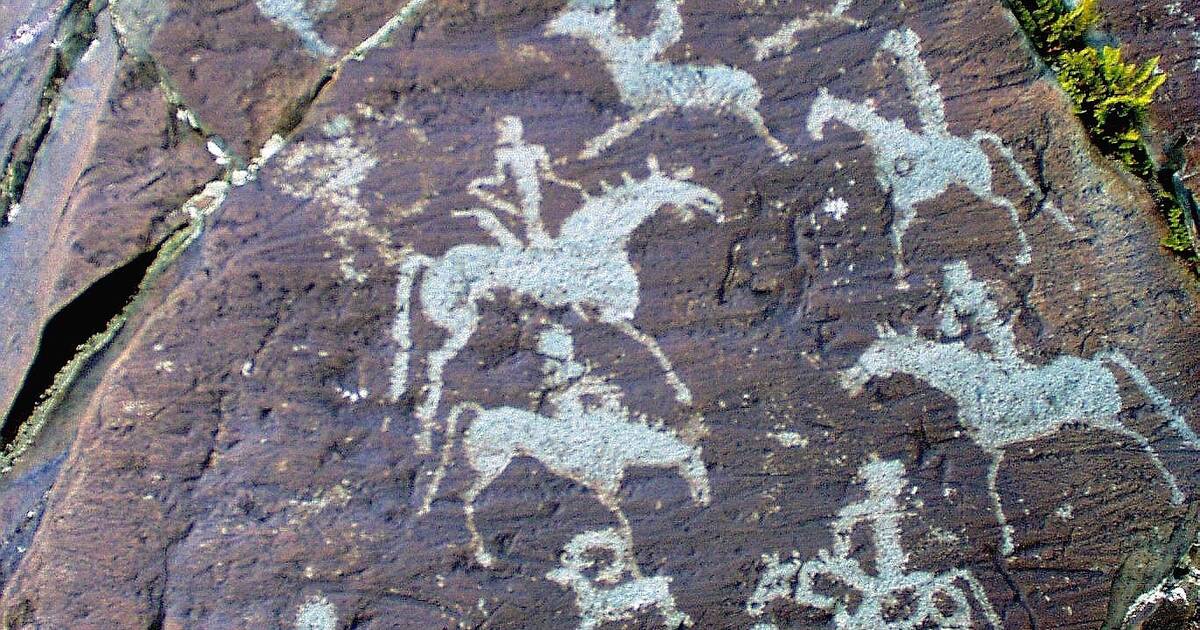Top destinations
- IELTS
- ЭЕШ бэлтгэл: Англи хэл
- ЭЕШ бэлтгэл: Математик
- ЭЕШ бэлтгэл: Физик
- ЭЕШ бэлтгэл: Хими
- ЭЕШ бэлтгэл: Биологи
IELTS
Brief synthesis
The Petroglyphic Complexes of the Mongolian Altai include three rock art sites in Bayan-Ulgii aimag: Tsagaan Salaa-Baga Oigor of Ulaankhus soum, and Upper Tsagaan Gol (Shiveet Khairkhan) and Aral Tolgoi, both of Tsengel soum. All three are located in high mountain valleys carved out by Pleistocene glaciers. These three property components include large concentrations of petroglyphs and funerary and ritual monuments reflecting the development of human culture over a period of 12,000 years. The persistent relationships between rock art, surface monuments and the larger physical context of rivers, ridges and cardinal directions create a vivid sense of the integration of human communities with the land they inhabited.
The earliest images reflect a period beginning in the Late Pleistocene and lasting through the Early Holocene (ca. 11,000 – 6,000 years BP), when the paleoenvironment shifted from dry to forested steppe and the valleys provided an ideal habitat for hunters of large wild game. Later images from the middle Holocene (ca. 6,000 – 4,000 years BP) reflect the gradual reassertion of steppe vegetation in this part of the the Altai and the early emergence of herding as the economic basis of communities. Imagery from the succeeding, Late Holocene Period, reflects the transition to horse-dependent nomadism during the Early Nomadic and Scythian periods (1st millennium BCE) and the subsequent spread of steppe empires in the later Turkic Period (7th-9th c. CE).
The Petroglyphic Complexes of the Mongolian Altai represent the most complete and best preserved visual record of human prehistory and early history of a region at the intersection of Central and North Asia.
Criterion (iii)
The Petroglyphic Complexes of the Mongolian Altai Mountain provide an exceptional documentation of the pre-historic and early historic communities in the northwestern Altai Mountains, at the intersection of Central and North Asia. The petroglyphic imagery includes animals such as mammoths, rhinoceros, and ostriches, executed in static profile contours. These animals inhabited North Asia when the region was significantly colder, drier and covered by rough grasses and forbs rather than forests. By the end of the Late Pleistocene (ca. 11,000 BP), the dry steppe was gradually being replaced by the forested environment of the Early Holocene (ca. 11,000 – 6,000 BP). This period is reflected in majestic images of elk, aurochs, and ibex, executed in profile silhouettes. There are very few sites in North Asia that include pre-Bronze Age petroglyphs in such number, variety, and quality.
ЭЕШ бэлтгэл: Англи хэл
ЭЕШ бэлтгэл: Математик
ЭЕШ бэлтгэл: Физик



